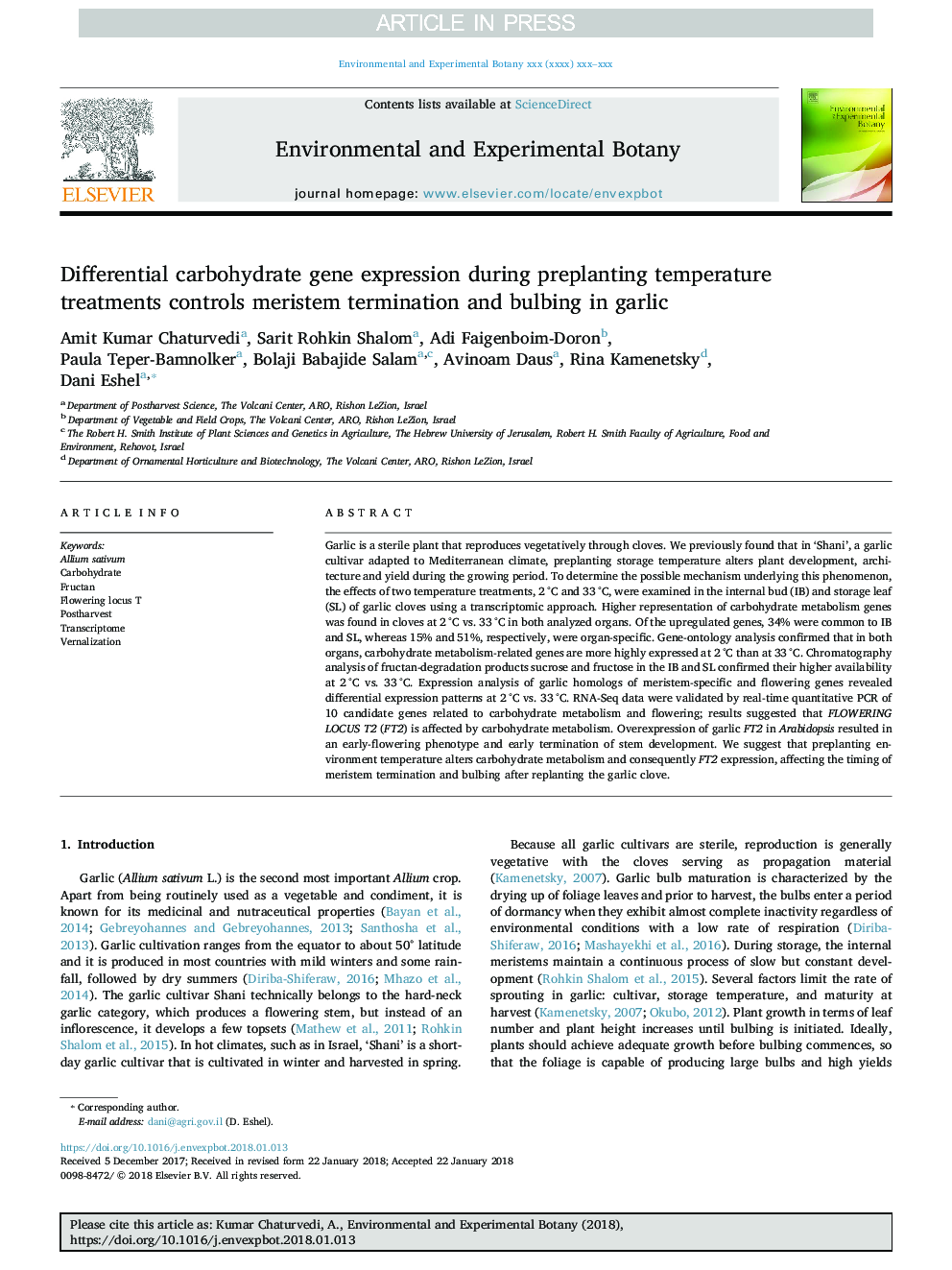| Article ID | Journal | Published Year | Pages | File Type |
|---|---|---|---|---|
| 8887030 | Environmental and Experimental Botany | 2018 | 12 Pages |
Abstract
Garlic is a sterile plant that reproduces vegetatively through cloves. We previously found that in 'Shani', a garlic cultivar adapted to Mediterranean climate, preplanting storage temperature alters plant development, architecture and yield during the growing period. To determine the possible mechanism underlying this phenomenon, the effects of two temperature treatments, 2â¯Â°C and 33â¯Â°C, were examined in the internal bud (IB) and storage leaf (SL) of garlic cloves using a transcriptomic approach. Higher representation of carbohydrate metabolism genes was found in cloves at 2â¯Â°C vs. 33â¯Â°C in both analyzed organs. Of the upregulated genes, 34% were common to IB and SL, whereas 15% and 51%, respectively, were organ-specific. Gene-ontology analysis confirmed that in both organs, carbohydrate metabolism-related genes are more highly expressed at 2â¯Â°C than at 33â¯Â°C. Chromatography analysis of fructan-degradation products sucrose and fructose in the IB and SL confirmed their higher availability at 2â¯Â°C vs. 33â¯Â°C. Expression analysis of garlic homologs of meristem-specific and flowering genes revealed differential expression patterns at 2â¯Â°C vs. 33â¯Â°C. RNA-Seq data were validated by real-time quantitative PCR of 10 candidate genes related to carbohydrate metabolism and flowering; results suggested that FLOWERING LOCUS T2 (FT2) is affected by carbohydrate metabolism. Overexpression of garlic FT2 in Arabidopsis resulted in an early-flowering phenotype and early termination of stem development. We suggest that preplanting environment temperature alters carbohydrate metabolism and consequently FT2 expression, affecting the timing of meristem termination and bulbing after replanting the garlic clove.
Related Topics
Life Sciences
Agricultural and Biological Sciences
Ecology, Evolution, Behavior and Systematics
Authors
Amit Kumar Chaturvedi, Sarit Rohkin Shalom, Adi Faigenboim-Doron, Paula Teper-Bamnolker, Bolaji Babajide Salam, Avinoam Daus, Rina Kamenetsky, Dani Eshel,
